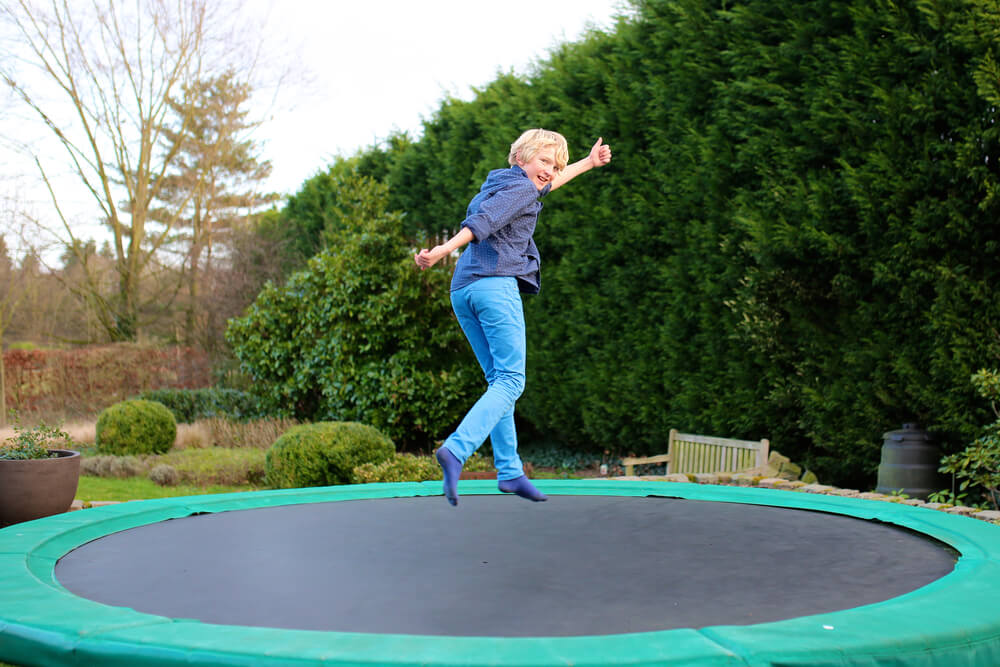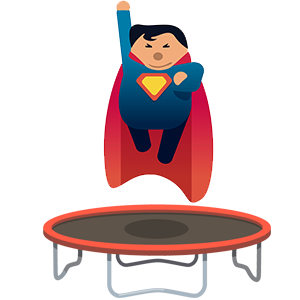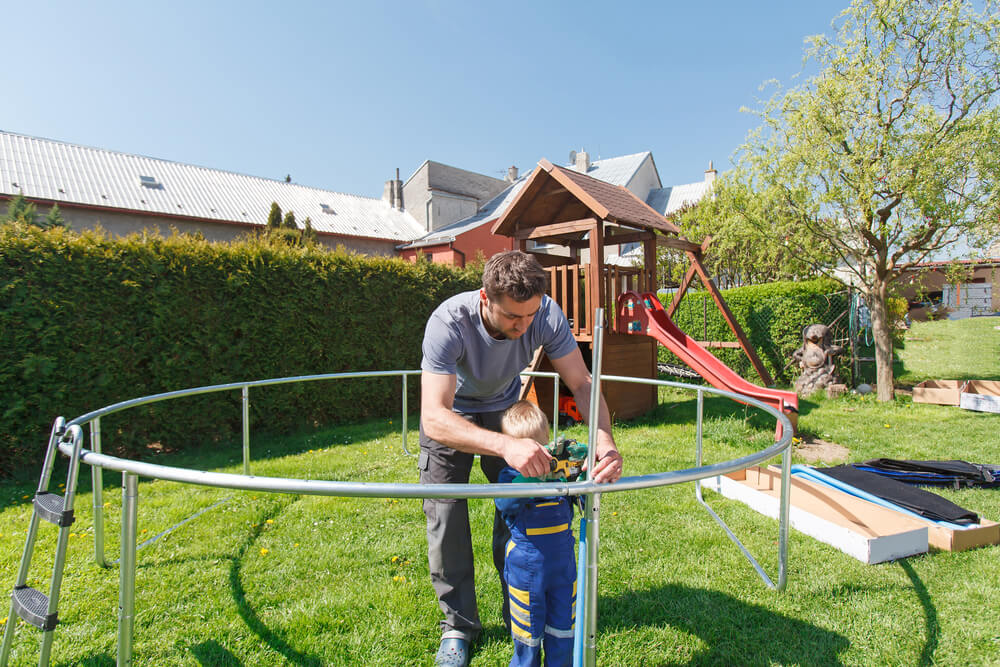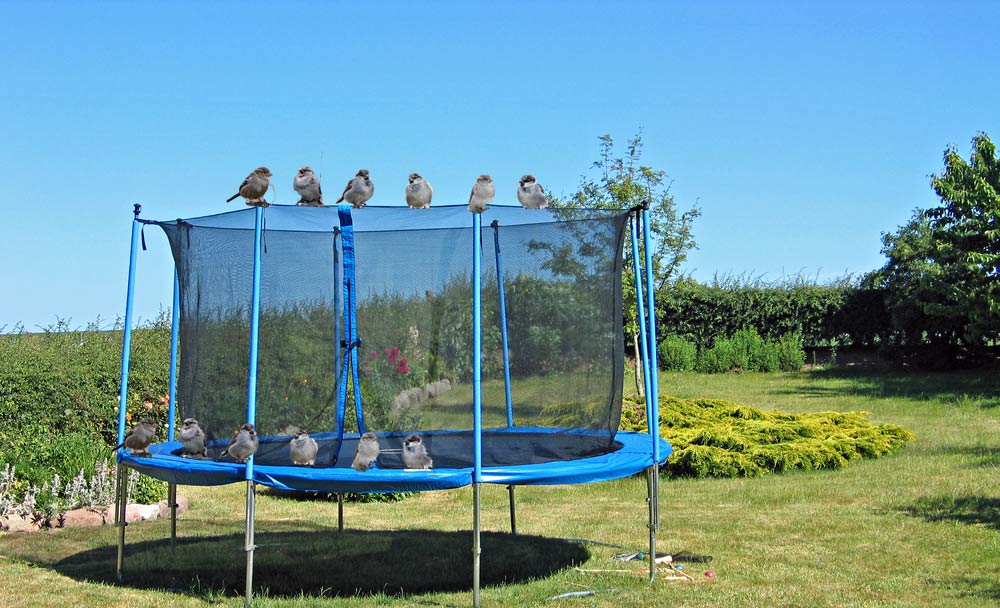So, you want an in-ground trampoline, but you’re worried about the rain and wetness cramping your style? Don’t worry. Having proper in-ground trampoline drainage makes all the difference.
Getting the right stage for your trampoline installation Did you already install your trampoline and notice the water pooling? Or are you thinking of it as a preventive measure?
Why Do You Need Drainage for Your Trampoline?
Before we get to the solution, have you asked yourself why it’s important to consider drainage?
It’s simple. The in-ground trampoline requires digging a hole into the ground first and then placing the trampoline mat over it. The presence of a hole means water may get in and settle when it rains.
Think of all the times it rained, and you had different-sized puddles because there were holes in your compound that filled up. The result is an icky mess that could be a breeding ground for pests and diseases.
The water could also cause corrosion on the metallic parts of the trampoline, thus impairing its function. You don’t want to jump on the trampoline and hear some sloshing underneath. The kids may think it sounds fun, but they probably won’t be able to jump as high as they would like.
A slippery trampoline can easily cause accidents and isn’t safe to use.
Water erodes the metallic parts, and if a trampoline has some of its parts eaten away, it poses a problem. It is dangerous to use because this trampoline is sitting on the ground. A fall could be catastrophic.
That said, this problem doesn’t happen to everybody. The situation may be worse where there is clay soil due to poor drainage. It also occurs in areas with a high water table.
Even so, it doesn’t hurt to prepare for it. Let’s explore that together! How to do it?
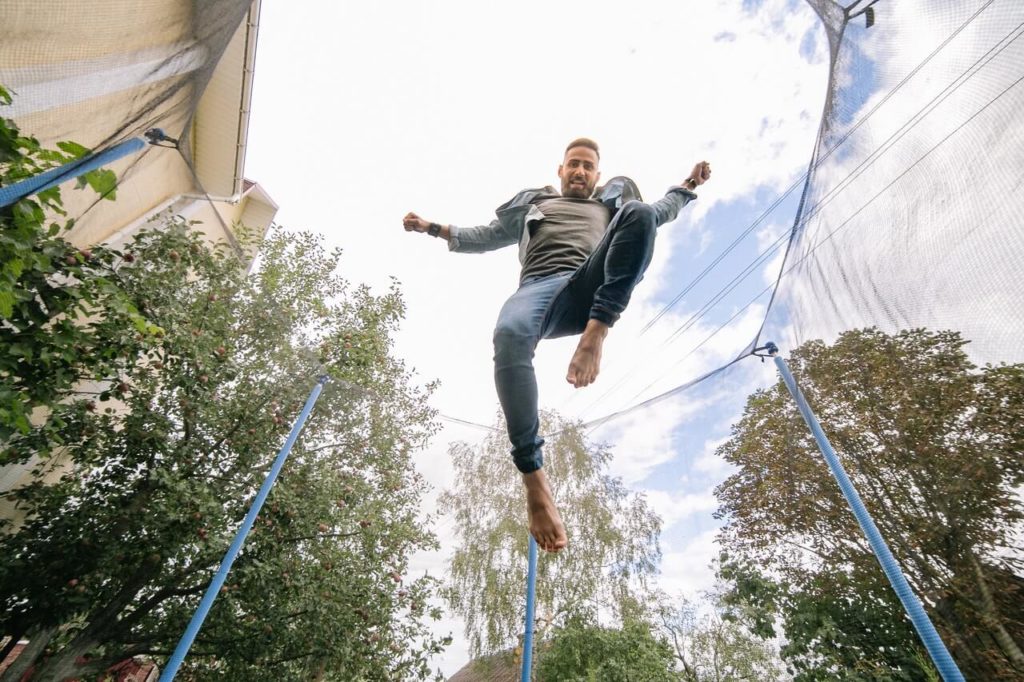
Installing In-Ground Trampoline Drainage
Lucky for you, there are several approaches to choose from. Your trampoline drainage problems are about to end! Let’s get to the meat of it.
First Approach: Soak Away
We start with an easy and relatively cheap method. You will need to dig your trampoline pit a little deeper than recommended by the experts. You must fill it up with other materials that easily drain water, such as crushed rock or pea gravel.
Second Approach: Pump It When You Need To
Using a pump is the simplest of these methods. You will need a drainage pump, but you’ll only use it when the hole fills up with water from wherever.
A pump requires a power source to run it, so consider your options. You can connect an extension cable to the closest socket or power source. You may consider a generator to power the operation if that presents a problem.
Connect the pump, have the inflow hose properly placed into the hole under the trampoline, and direct the outflow hose somewhere else. Make sure the water flows to a place it won’t cause another pool or health hazard. Switch on the pump and let it work its magic.
This option is perfect when the trampoline has already been installed without considering drainage.
Third Approach: Install a Drain Pipe
Here you’ll use gravity to your advantage. Can you connect a drain pipe to the bottom of the trampoline hole? Can you connect a drain pipe to the bottom of the trampoline hole? The water will flow, and you won’t need any pump or power source.
It’ll work even better if the trampoline pit is in a raised area. You’ll have peace of mind knowing things are moving, literally! The water needs to flow downhill on its own, so topography matters.
The recommended size is a 4” pipe.
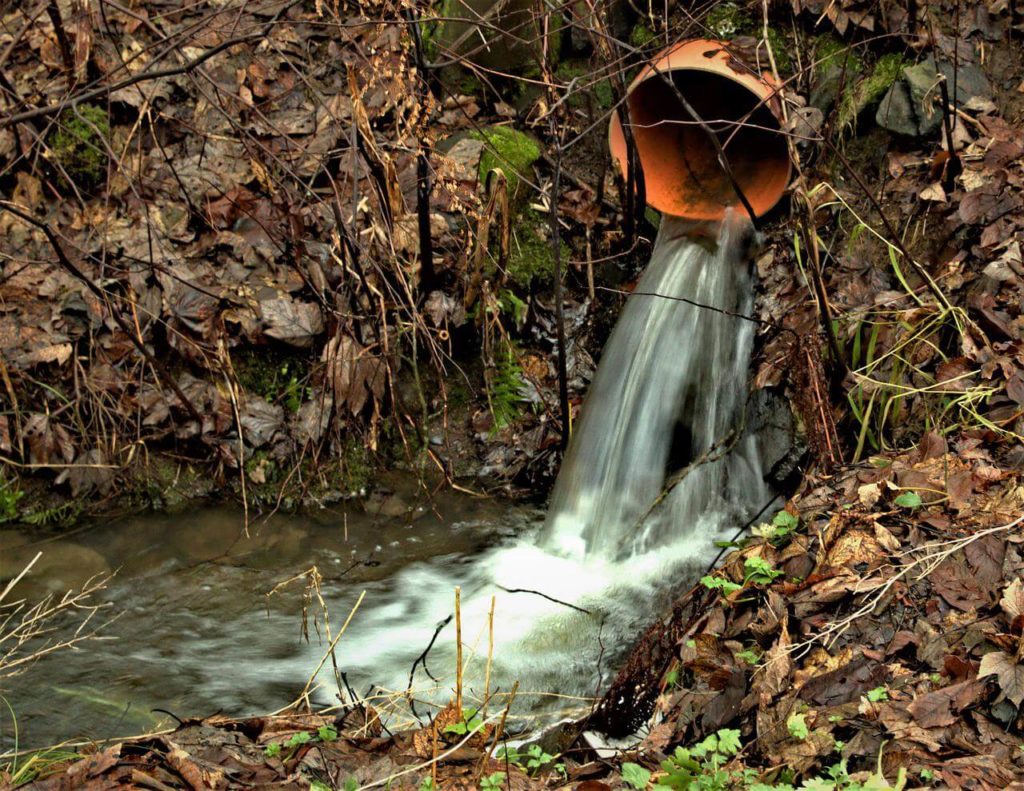
Fourth Approach: Dig a French Drain
In this method, you will need to dig a trench or channel from where the drain pipe will end. The digging goes all the way to the trampoline. Make sure your pipe has small drainage holes drilled into it along the sides in straight lines.
Pour some gravel into the trench and then lay the pipe with the holes facing the ground. Pour some more gravel on top of the pipe and cover it.
Since water moves better through gravel than compacted soil, the water from your trampoline pit will drain much better than a drain pipe. The holes along the pipe’s sides allow water to drain out even if it is at a low level.
Fifth Approach: Install a Permanent Pump
For this, you will need a submersible pump. It sits at the bottom of the trampoline pit and remains permanently connected to a power source. A trench to house the cable and outlet pipe is necessary.
You can activate the pumping manually by switching on the pump from the electrical outlet. Alternatively, you can use a float switch activated by the water level.
When the water rises, the switch moves into a vertical position when the water rises, activating the connection. It doesn’t need your input after installation unless there’s a problem. Pretty neat, right?
All these five options will work well to provide great in-ground trampoline drainage. Choose what works best for your soil, topography, and needs.
As you consider your options, consider these two important tips as well:
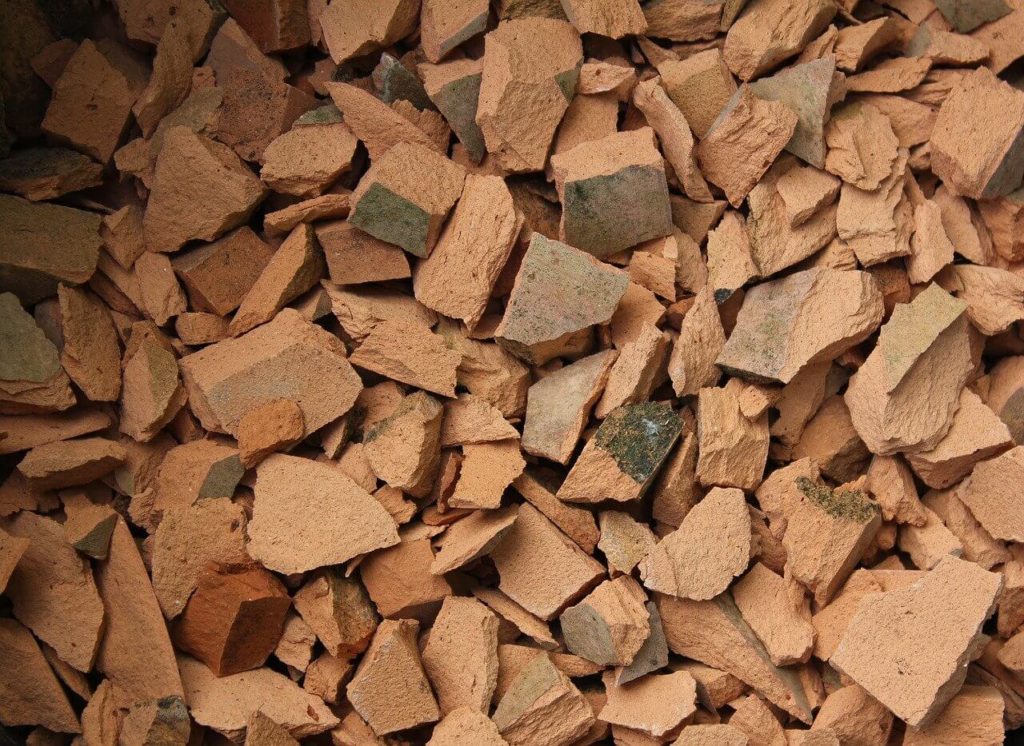
Pointer 1: Your trampoline should be as level as possible for safety reasons and because it’s more fun to jump on that way. Even so, consider introducing a little tilt or angle to the outer hole ledge.
Why, you ask? It’ll help with drainage into the inner hole. That way, your trampoline stays dry at all times.
Pointer 2: Flowing water in nature will sometimes come with debris. That’s fine and expected but can clog your drainage pipe and render all your hard work useless.
Put a little mesh material over the pipe opening; all that will go through is water.
Pointer 3: It would serve you well to check your water table before installing your trampoline. It’ll help you choose the best drainage system for your in-ground trampoline and save you any unnecessary trouble in the future.
Important Things to Consider When Looking at Drainage for In-Ground Trampolines
Setting up an in-ground trampoline means you’ll have to remove the grass cover. While the grass may not grow back, weeds are almost certain to come back. They’re a resilient bunch!
The likelihood increases if the ground stays moist and the weeds get sunlight. They’ll, of course, grow toward the sun and quite fast. If they remain covered under the trampoline mat, they’ll die off and rot.
The resulting smell will be very unpleasant! Who wants to smell compost when on the trampoline?
Weed Control

How do you fix this mess?
Well, weed matting is the way to go. It will keep weeds from growing without hampering drainage. You may be tempted to go with thick plastic sheeting, but this will have water pooling underneath since it doesn’t have holes.
You probably think the perforated one would do better, but it will allow weeds to grow through the holes. Weeds don’t waste any opportunity they’re given!
Drainage Material
We’ve spoken about using material that drains well under the trampoline. Crushed rock is cheap and easier to come by, but some pieces may have sharp edges. These could cut into the weed matting.
These pebbles have a smooth surface and won’t cut anything around them. They won’t get too compacted, and water will flow freely. The size allows them to settle evenly. A better option is a larger round rock, about 1.5 inches wide.
Summing Up
Water pooling under a trampoline is best sorted before it happens, especially if you have clay soil, have a high water table, or know the rains hit hard in your neighborhood.
You can use a drainage pipe, a french drain, or a permanent pump. If the trampoline pit is already flooded, you can simply put a pump and drain it.
It can be as simple or as complex as you want, depending on your budget, time, and whether you’ve already installed your trampoline or not.
Proper drainage is necessary for the in-ground trampoline to function at its full capacity and serve you for many years. Do it well, and you’ll enjoy value from your in-ground trampoline.

